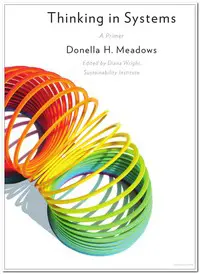
A system is simply a collection of elements that are interconnected in many ways to accomplish a certain function. Learning how to think in systems is important because it provides a new perspective of how certain processes operate on a granular level.
Systems thinking helps to expose the root causes of ongoing problems and to promote a targeted approach for improving results. Procurement professionals can benefit from systems thinking by using the following framework to approach all opportunities for managing spend.
Everything can be viewed as a system, no systems are perfect, and all systems are composed of three main parts:
- Elements – The individual components that make up the system
- Interconnections – How the elements interact with other elements
- Function(s) – The overall goal or purpose the system is intended to accomplish
Viewing opportunities through a systems mindset allows one to quickly cut through the surface-level symptoms of the problem that is being addressed and go straight to the root causes. Once the root causes have been identified, it becomes much simpler to make targeted improvements that will directly lead to a more desirable outcome.
Understanding how to break down processes into systems is highly beneficial for making targeted, quantifiable improvements without having to go through a total redesign.
When approaching any broadly defined opportunities, exploring the situation from different perspectives can be the difference between finding a good solution and a great one. All problems can also be put through this framework, and when they are broken down into elements, interconnections, and function(s) some clear areas for improvement will arise.
Here is a relatable example to demonstrate the use of a system.
Problem
A common problem in business is busy inboxes and slow response times to email.
Elements
Elements in this system include the email account(s), computer, phone, outside senders, recipients, and email reminders. A follow-up email from the original sender serves the same purpose as a personal reminder, but which is most time-efficient?
Interconnections
The interconnections of this system are largely determined by the number of devices that you use to manage your emails and the number of email accounts that you manage. In this case, if you are just using your phone and computer to manage emails, it is important to verify that they are properly synced. Additionally, when multiple email accounts are being managed simultaneously, it is important for them to be connected through the same service for the sake of convenience and consistency.
Function(s)
If the function of the potential system is to lower response times to emails it would be best to re-evaluate reminders so fewer requests slip through the cracks. Now that the problem has been identified (missing reminders), determine what qualifies as “reminder-worthy.” Moving forward, whenever a request meets the criteria, immediately set a follow-up reminder and at certain predetermined “check-in” points during each day, allocate some time to clear through your reminder queue.
Systems allow users to quickly identify root causes of problems and make small, targeted improvements to the elements and interconnections of a given system. In procurement, there are always going to be better approaches for evaluating potential suppliers and managing spend, so sometimes viewing your current opportunities through a systems thinking mindset is all it takes to make major improvements in your daily workflow. When there’s always room for improvement and anything can be viewed as a system, there are no problems too large or too abstract to approach confidently.
Note: Much of the inspiration for this blog came from the short text, “Thinking in Systems” by Donella H. Meadows (Pictured below).
Subscribe to Arroyo Strategy Insights to access whitepapers, presentations, plus our latest thought leadership.



